Lyme disease is an infection caused by the bacteria, Borrelia burgdorferi. It was discovered in Lyme, Connecticut in 1975 where a number of children that had Juvenile Arthritis were found to have this bacteria in their bodies. The bacteria comes from the bite of infected deer ticks. The symptoms of Lyme disease includea “bullseye” rash, fever, stiff neck, headache, joint pain, and fatigue. Later in the disease there can be problems with thinking and memory. If left untreated, the disease can be disabling. The usual treatment is antibiotics for a number of weeks. If your doctor gives the okay, lyme disease natural treatment can be used along with antibiotics to help the body heal faster. This article explores how to cure Lyme disease naturally.
Natural Treatment for Lyme Disease
There are a number of remedies to help boost your immune system to help fight off the bacteria. Many people ask how to cure Lyme disease naturally and if antibiotics are really necessary. This is a decision only you and your doctor can make. There are people who have undergone lyme disease natural treatment and claim to have cured their Lyme 100%, but for every case that just isn’t realistic.
Natural remedies for lyme disease require herbal antimicrobials that work on getting rid of the bacteria, support for your immune system, changes in your diet, and supplements to help your body get what it needs. With lyme disease natural treatment, some patients recover around 90 to 95 percent of their normal activity levels. This is because the natural remedies beef up the immune system to go very deeply where the Lyme bacteria likes to hide.
1. Less Dairy, Sugar, Caffeine and Red Meat
You don’t need to cut these things out completely, but eat them in moderation. The Lyme bacteria like to feed off these things, so if you take away the food they become weaker and more responsive to treatment. Dairy can increase inflammation in the body, but organic raw milk is fine to drink.
2. More Leafy Greens
Make a good size salad with lunch or dinner every day. This will help combat fatigue and increase your body’s ability to fight the infection. It will also help to cleanse the body of toxins.
3. Cat’s Claw
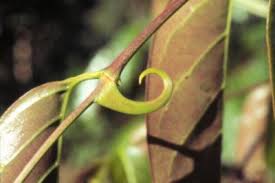 One popular remedy is Cat’s Claw. This herb has immune boosting chemicals that can fight off infections and cancer cells. Start slowly by only taking one drop of extract a day in a full cup of water. Work your way up to 5 drops daily until you have reached the maximum of 25 drops a day. Make sure you use this herb on an empty stomach.
One popular remedy is Cat’s Claw. This herb has immune boosting chemicals that can fight off infections and cancer cells. Start slowly by only taking one drop of extract a day in a full cup of water. Work your way up to 5 drops daily until you have reached the maximum of 25 drops a day. Make sure you use this herb on an empty stomach.
4. Andrographis
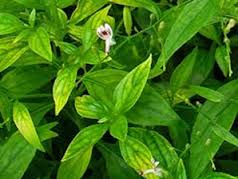 All of the lyme disease natural treatment, this herb combats the Lyme bacteria, helps with the fatigue, and headaches, and boosts immunity. Use according to an herbalist's recommendations and use caution if you have any allergies. This herb has caused skin rashes in some people.
All of the lyme disease natural treatment, this herb combats the Lyme bacteria, helps with the fatigue, and headaches, and boosts immunity. Use according to an herbalist's recommendations and use caution if you have any allergies. This herb has caused skin rashes in some people.
5. Japanese Knotweed
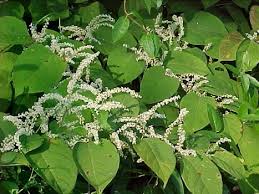 This is an edible plant from Asia. It is from the buckwheat family and known to help with Lyme disease. Take 1 teaspoon three times a day mixed into liquid. Some people need a little more and some need a little less.
This is an edible plant from Asia. It is from the buckwheat family and known to help with Lyme disease. Take 1 teaspoon three times a day mixed into liquid. Some people need a little more and some need a little less.
6. Stephania
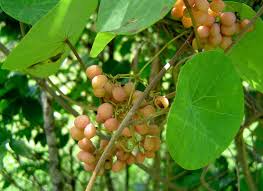 Stephania is an anti-inflammatory herb, helps with problems thinking, and boosts the immune system. It can also reduce the pain of Lyme arthritis. Take ½ to 1 teaspoon three times a day. It may have a side-effect of constipation and is not safe during pregnancy.
Stephania is an anti-inflammatory herb, helps with problems thinking, and boosts the immune system. It can also reduce the pain of Lyme arthritis. Take ½ to 1 teaspoon three times a day. It may have a side-effect of constipation and is not safe during pregnancy.
7. Probiotics
 This lyme disease natural treatment can be in the form of supplements or yogurt. Probiotics are necessary with Lyme disease if you are using antibiotic treatment. Antibiotics take too much of the “good” bacteria out of your body. Taking probiotics can also help boost your immune system with any Lyme treatment. Make sure you take probiotics 2 hours after antibiotics and continue to take them even after you finish any treatments.
This lyme disease natural treatment can be in the form of supplements or yogurt. Probiotics are necessary with Lyme disease if you are using antibiotic treatment. Antibiotics take too much of the “good” bacteria out of your body. Taking probiotics can also help boost your immune system with any Lyme treatment. Make sure you take probiotics 2 hours after antibiotics and continue to take them even after you finish any treatments.
8. Vitamins
 Your body needs all the strength and energy it can get. Start using a multivitamin every day and make sure they contain adequate vitamin C and B vitamins. You may even need to start using a melatonin supplement at night for better sleep.
Your body needs all the strength and energy it can get. Start using a multivitamin every day and make sure they contain adequate vitamin C and B vitamins. You may even need to start using a melatonin supplement at night for better sleep.
Vitamin D can help boost the immune response to Lyme. Take at least 5,000 i.u. daily if you live in a Northern region that gets less sunlight. Consult your doctor for the proper amount needed by you.
9. 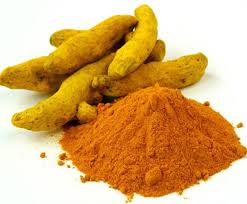 Turmeric
Turmeric
This spice we use in everyday cooking is a powerful natural anti-inflammatory. Take 1 to 3 grams per day. This herb can reduce blood sugar levels, so talk to your doctor about using it if you are diabetic.
10. Garlic
When it comes to lyme disease natural treatment, everyone has a magic cure in the kitchen. Garlic has antibacterial effects and may even help reduce the chance of tick bites if eaten on a regular basis. Include in your daily cooking and you’ll find it irresistible.
Tips on How to Cure Lyme Disease Naturally
The following tips can help your body fight off Lyme disease as part of your treatment plan. Lyme should never go untreated, so the following tips alone will not cure Lyme. Incorporate the following into your daily routine during treatment:
- Rest a lot. Your body is at battle right now and the fatigue is often for a reason. You need to slow down and rest when you feel tired. If you like exercise, switch to low-impact exercise likeYoga. Healing is hard work and your body will thank you.
- Stay positive. Positive thoughts are very healing. You will feel better soon if you stick with your treatment plan. Try to meditate and focus on feeling better. Talk to someone who understands Lyme disease. Try to do something for yourself every day.
Again, using natural remedies for Lyme disease is an important decision for you and your doctor to make together. It is always important to discuss any use of herbs with your doctor to avoid any drug interactions or unwanted effects on other health conditions.
A word about antibiotics:
It will always be recommended by your doctor that you take antibiotics for Lyme disease. While these are the only approved medical treatment for Lyme, they don’t often take care of other things called “co-infections” you get from a tick bite. Antibiotics don’t always get to the Lyme bacteria, because it is a spiral shape that bores down into your tissues. It also has a very tough membrane that keeps the antibiotics out. Many people continue to experience symptoms of Lyme long after antibiotic treatment has ended.
